We’ve never been totally satisfied with the transom arrangement on C Ghost. We like the molded in swim platform, but the way the factory designed ladder is stowed and deployed hinders more than helps our activities at the aft end of the boat. Here’s what the original ladder looks like when it’s deployed:
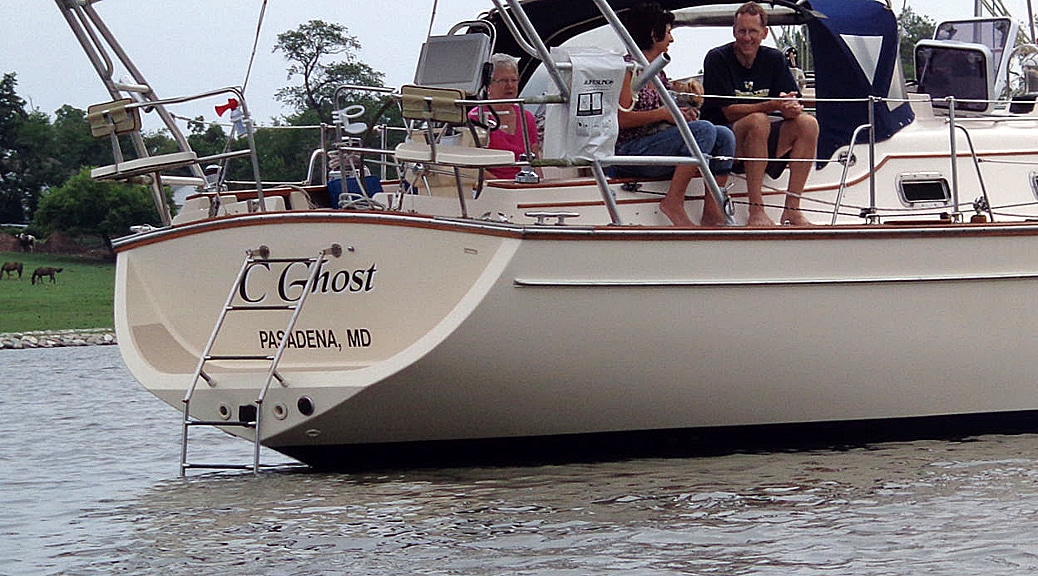
To be fair, it is a very easy ladder to climb, having wide steps that also make good handholds. But as you can see, it renders the middle (and most spacious) part of the swim platform unusable. While it appears there is room on either side of the ladder, the upward curvature of the platform and narrowing of the standing area greatly limits the usable space on the sides. Also, the hinge in the middle of the two-part ladder, seen just below the level of the platform, happens to be at a height that pokes the tubes of most inflatable dinghy’s that land at the transom. And boarding the boat from the dinghy with the ladder down always seems awkward, especially because that third step is only a couple inches above the platform surface. It’s amazing how many times a foot manages to get caught in that little space even though we know it’s there.
Here’s what the original ladder looks like when it’s stowed – it first folds in half onto itself and then folds up to the level of the cockpit railing:
The ladder stows nicely out of the way, clearing the largest part of the swim platform to make it more useful. But this stowing arrangement makes it very difficult to get on to the swim platform from the cockpit with the ladder up. You have to do some gymnastics to climb over the railing and then either jump or take a big step down onto the platform. And once you are on the platform, you have to be careful of the sharp edges on the two hinges where the ladder attaches to the boat. It’s equally difficult to get back into the cockpit with the ladder up. One other safety situation we weren’t completely happy with was the near impossibility of deploying the ladder from the water if for whatever reason you found yourself in the water with the ladder up.
Despite all these negatives, we kept it like it was for eight years before finally deciding to change it. The catalyst for this project was the failure of one of the mounting brackets for the ladder while we were in the Bahama’s last year. Here you can see the problem:
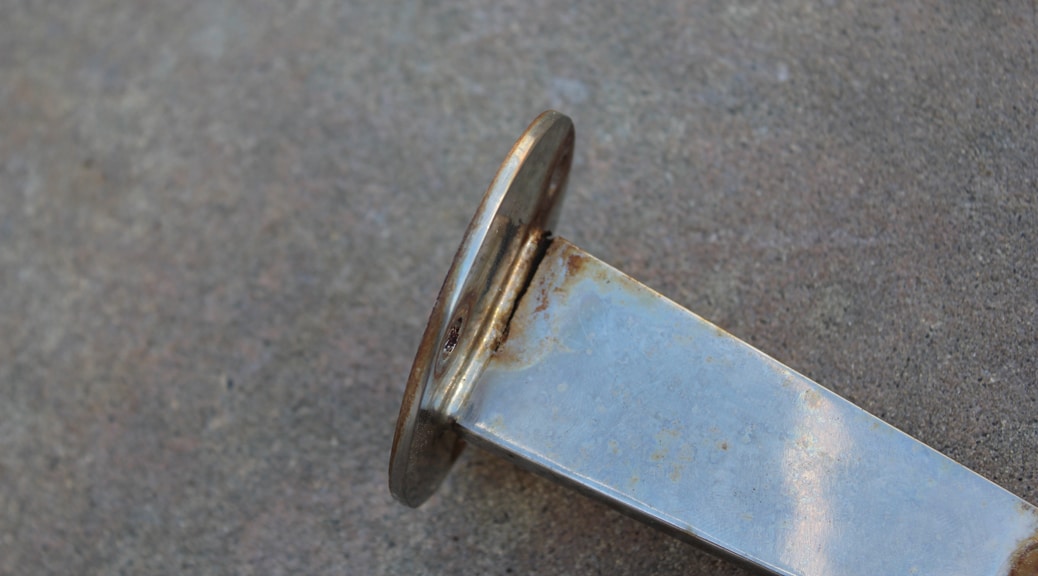
Knowing we had to go through an expense to replace/repair the ladder, we decided to ditch the whole thing and change the design entirely. At the same time, we wanted to reinforce the part of our cockpit arch that overhangs the transom so it could easily handle the added weight of our new larger dinghy when it hangs in the davits.
We began this project with a new swim ladder design. We wanted the ladder to not impede the middle and most spacious part of the swim platform in either it’s deployed or stowed position. We wanted to make it much easier to get onto the swim platform from the dinghy, and then up into the cockpit from the swim platform. And we didn’t want the ladder to interfere with landing the dinghy at the transom. Lastly, we wanted to be able to deploy the ladder, if needed, from the water.
To accomplish all this, we built a small separate platform on which we mounted a hinged telescoping ladder.
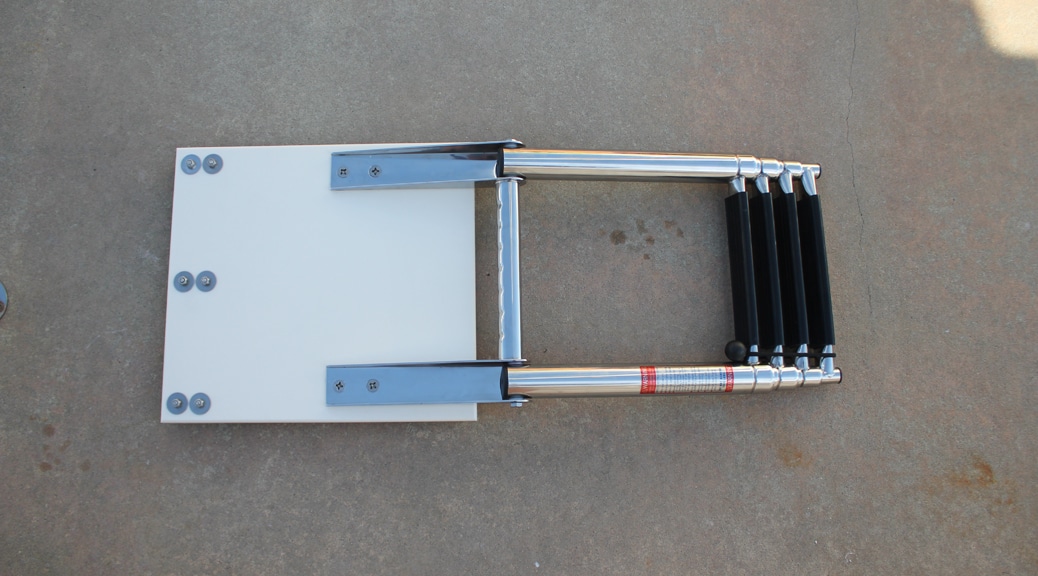
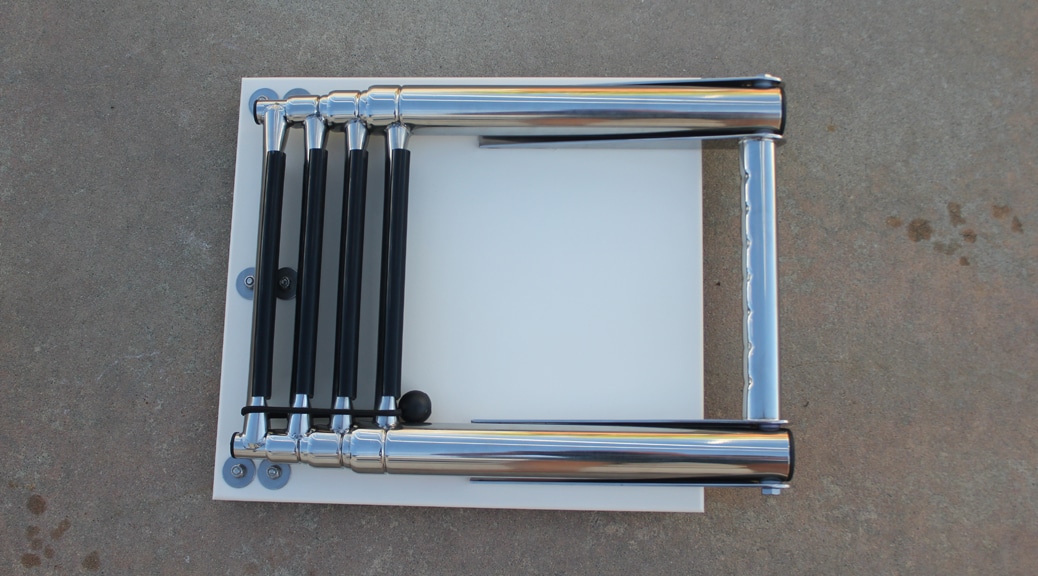
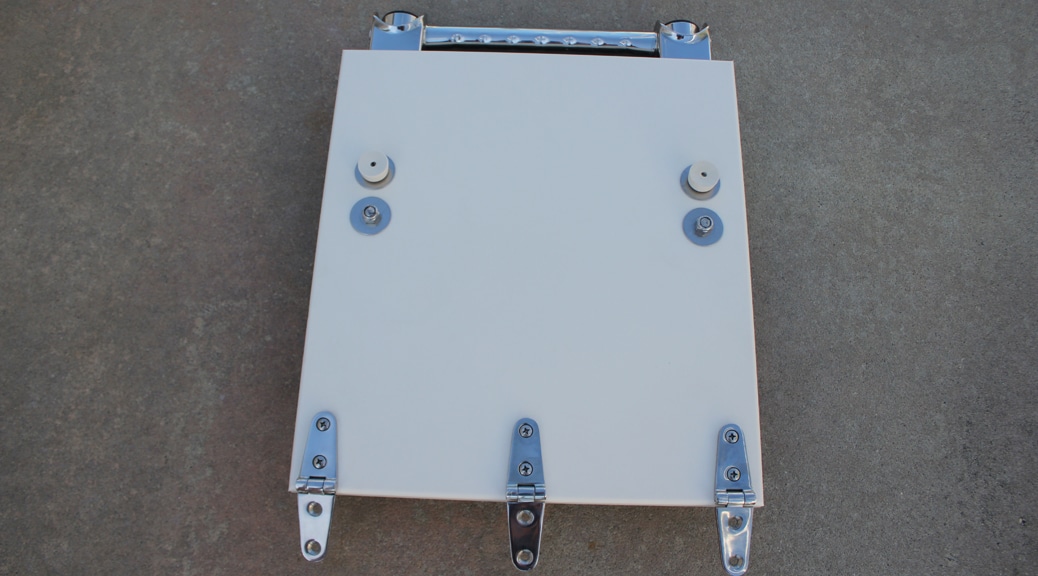
This platform/ladder combo was then mounted on the starboard side of the boat’s swim platform. The hinges on the new ladder platform allow it to be stowed up against the transom when not in use. The telescoping ladder has four steps and goes down 4 feet. This model has a handhold at the top of the ladder and we installed an additional handhold on the transom just above the ladder platform. A stainless clip screwed into the transom holds the ladder platform up against the transom when in the stowed position.
We also mounted a folding step on the transom next to the new ladder arrangement. This step is used to easily get on and off the swim platform to and from the cockpit and folds up out of the way (with no sharp edges) when not in use .

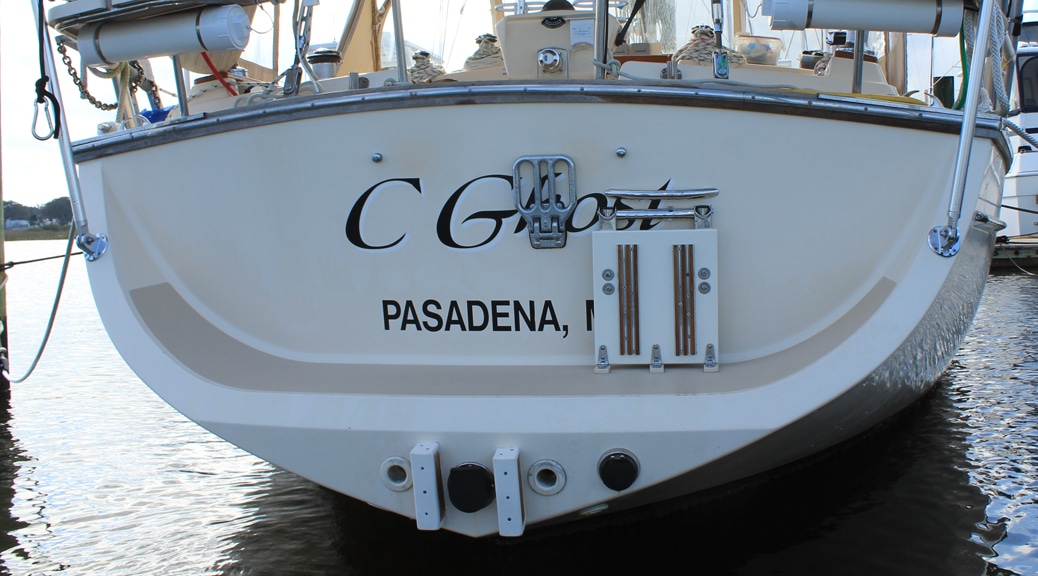
Another problem we always had with the dinghy was how it would rub against the engine exhaust flapper when launching/retrieving from the davits or just “docking” the dinghy at the transom to get on/off the boat. Not only did this prematurely weaken the hinge part of the flapper, it left black marks on every dinghy that landed at our transom. To solve this, we fabricated a couple of rigid bumpers out of starboard and teak and glued them to the hull on either side of the flapper. The smooth surface of the starboard lets the dinghy tubes ride up and down smoothly when raising/lowering the dinghy from the davits and also prevents hitting the flapper when landing/docking at the transom.
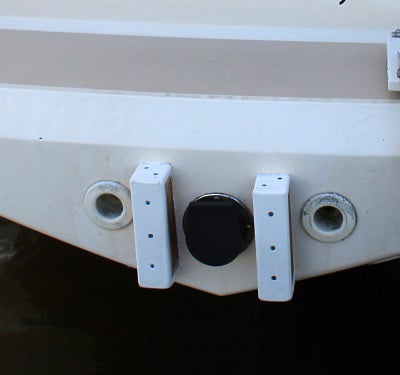
The one issue we haven’t addressed yet is the obstruction of the name on the transom from these changes. When we cruise, the dinghy is usually in the davits and totally obstructs the name anyway, necessitating a boat nameplate hung on the outboard side of the dinghy while it’s in the davits. Even so, we know we need to fix this – just another project.
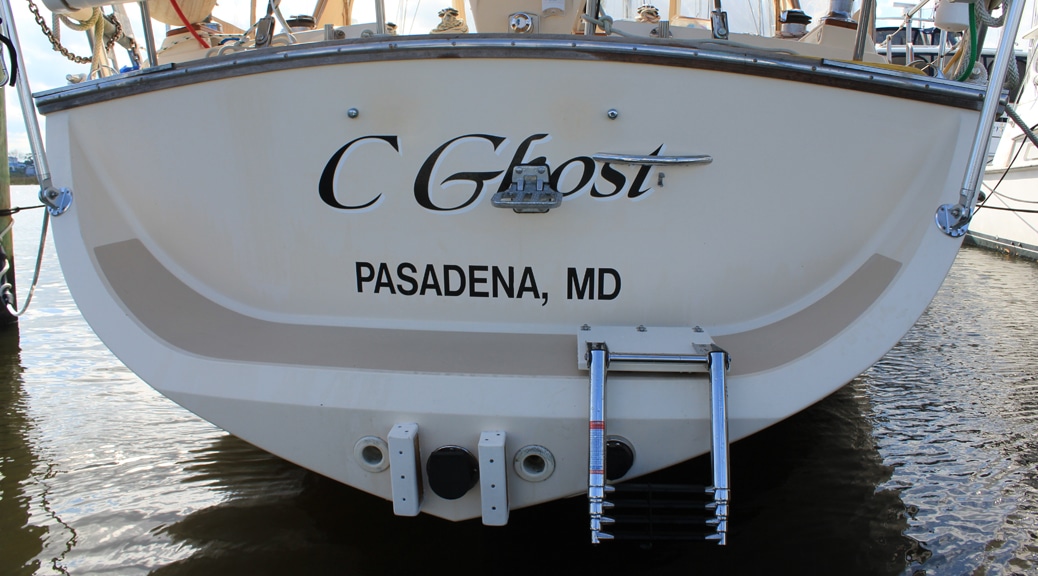
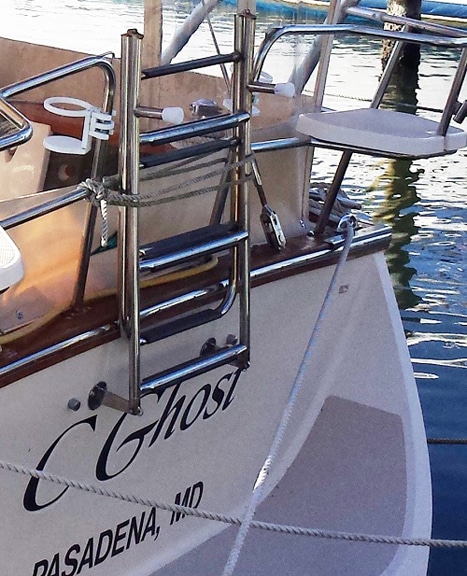
7 Responses
Gee Tom, this upgrade installment with folding step and ladder looks safe enough, with the added hand hold rungs, for me to give it a try. At least to get to the swim platform.
Once again, great addition!
Impressive design.. good to see you are still using your engineering skills!
Thanks Bob. I’ve got an upcoming article on our array of antennas and comms gear. Getting all that to function seamlessly was a big engineering challenge.
Looks good! There is no shortage of projects on a boat.
Yes – no shortage of boat projects, as we know you are more than well aware! We’ve got enough to keep us busy all the time on this boat. Can’t imagine how you did it on a boat almost twice the size. Miss you guys.
Very well done guys! I have a similar folding ladder on my boats swim platform I mounted on my boat last year! I love mine! Nice job figuring out how to solve all the problems! And a well written description of said fixes!
Thanks Rich. The solution to all this eluded us for a long time and we’re finally happy with current arrangement. We can now much more easily use a part of the boat (swim platform) that we would typically avoid because it was hard to deal with.